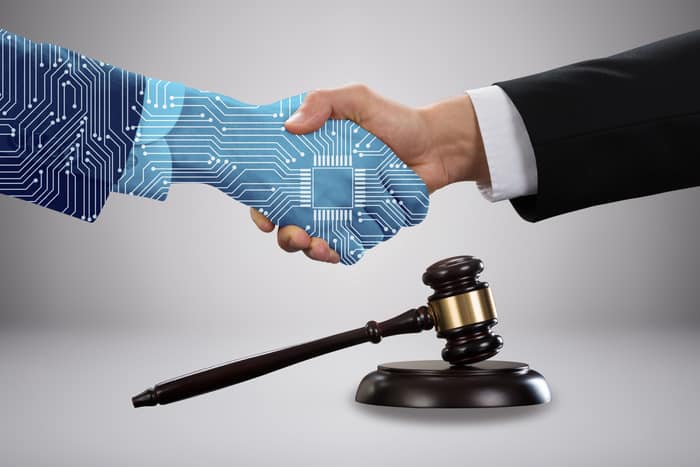Law enforcement is constantly evolving. Sometimes, changes are related to policy amendments or shifting social values. Much more often, it’s a consequence of evolving technology. Tools that arrive and change the way law enforcement officers process crimes and reach conclusions.
Over the years, new technology has proven the innocence of people convicted of crimes they did not commit. It has also made a safer world for people who MIGHT have wound up in trouble had it not been for modern tools capable of testifying to their innocence.
That’s a good thing, but it also casts an uncomfortable shadow over law enforcement decisions of the past. In this article, we examine how new technology changes laws and impacts efficiency and ethics.
The Whole World is Watching
One of the ways that evolving technology has changed law enforcement is through the proliferation of surveillance technology. While video cameras are not new, they have become much more accessible in recent years.
It used to be that only the wealthy could afford security cameras for their homes. Now, middle-class families can acquire exterior cameras at Best Buy for a (relatively) affordable price.
Businesses are in the same boat. This heightened state of surveillance has resulted in an Orwellian discomfort, but it also has made crime prevention and detection easier.
Now, if there’s a home break-in, video footage may lead directly to the perpetrator. Even if the homeowner didn’t have cameras, there’s a decent chance that the burglar’s car will be picked up on camera at some point in the neighborhood.
Law enforcement officers also routinely wear cameras on the job. Body cam footage is often used in cases where a police officer has been accused of excessive force. It’s also just used to confirm the reported conduct of everyone involved in an arrest.
The Art of Forensic Science
Forensic science has developed in great leaps over the past several decades. While many people think of it as a well-established science, that isn’t really true. DNA evidence only entered the legal atmosphere in 1986. If you’re in your mid-thirties, you may have been born before it existed at all.
It’s an uncomfortable fact that there are innocent people sitting in jail right now because the crime they were accused of took place before DNA evidence existed.
“But that doesn’t make sense,” you might be thinking. “It’s been long enough—surely the evidence would have been reexamined by now.”
What evidence? Crime scene investigators of 1978 weren’t just saving biological materials in the hopes that they might one day undo the verdicts they themselves helped establish.
Nor, for that matter, are today’s criminal investigators saving irrelevant evidence in the hopes that technology thirty years from now might clarify it.
How could they?
Even in cases where evidence testable evidence does still exist, the process is slow and time-consuming. It can take months— even years of appeals for a convicted felon to have evidence re-evaluated. For that to happen, the convict needs to understand their options, and have the resources to pursue them.
They also need a cooperating judge to approve their appeals, which doesn’t always happen. It’s a difficult, painful process.
AI
AI is now being used to evaluate legal proceedings and physical evidence quicker and more accurately than humans can. In certain cases, AI is being used to scan legal filings, looking for logical or legal contradictions that could invalidate a case.
AI is also used to analyze surveillance footage and establish identifications in cases where the evidence is not clear to the naked human eye.
The idea behind this technology is to make legal proceedings more objective and fact-based. Critics have, however, raised concerns both about the quality of AI technology, and the potential for pre-programmed bias.
Reconsidering Verdicts
One of the most uncomfortable ethical conclusions of technological advancements has been that they often cast a new light on settled cases. While the general consensus is that most legal verdicts are decided correctly, there are many documented cases in which people have been convicted of crimes that they did not commit.
These failures of justice are usually only revealed thanks to new information— often rendered at the hands of a recently evolved technology.
Obviously, when new technology can clarify an old crime, it is a good thing. However, it also forces us as a society to ask uncomfortable questions. What is our standard for determining facts? How often does the criminal justice system rely on circumstantial evidence— information that depends on inference rather than fact— to establish verdicts?
It’s an often touted legal phrase that it is better to let 100 guilty people go free than to put away one innocent. And yet that standard doesn’t seem to be applied in many cases.
In these situations, the difference between what our criminal justice system SAYS versus what it does becomes painfully apparent. Juries are asked to vote a person guilty only when evidence of their crime has been established beyond a shadow of a doubt. But without clarifying technologically derived evidence, are people even capable of being that objective?
It’s regrettably clear that they often are not. Discomfort arrives from the fact that there isn’t necessarily a clear actionable insight from this information. How can today’s jury know what tomorrow’s technology will make of their verdict?
Conclusion
Criminal justice technology is primarily a good thing. It makes cases more cut and dry. It prevents innocent people from going to jail, and it keeps both law enforcement, and the public they are sworn to protect, more accountable. These are positive things for which modern society should be grateful.
However, it is important to be reflective in the face of criminal justice technological innovations. Lawmakers should constantly look for ways to improve legal processes and work for fairer, more accurate verdicts.
